What it's like to drive GM's BrightDrop Zevo 600 electric delivery van
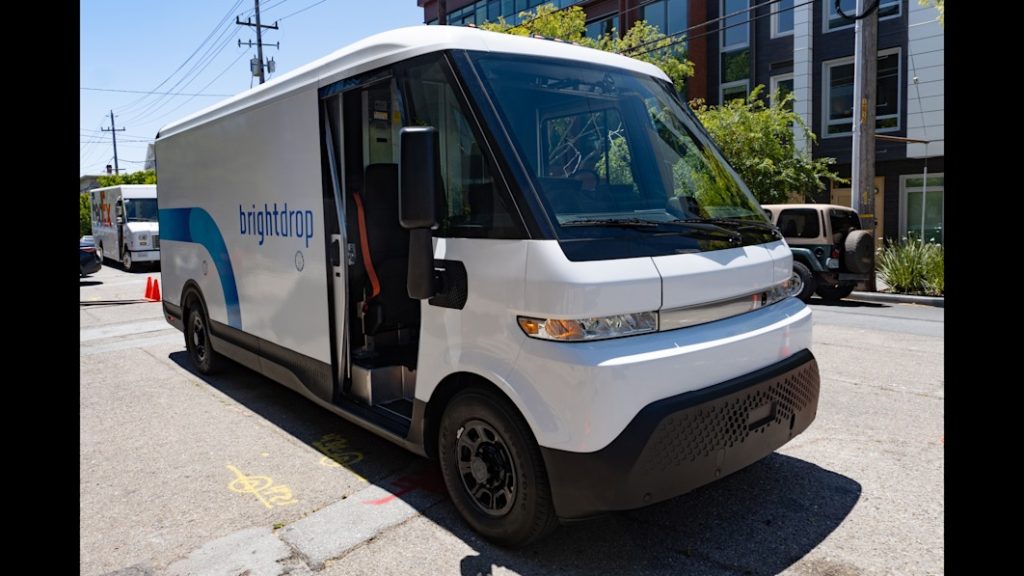
SAN FRANCISCO — As we rounded the corner, a man waved us down. He’d seen the van silently driving around the neighborhood all morning and wanted to know where he can get one. “It’s an EV,” I told him and his excitement grew.
“It’s exactly what I need,” he exclaimed as he pulled a card out of his wallet to hand to my copilot with the expectation that BrightDrop would call him with details about ordering his own electric delivery van. In a larger sense, FedEx, Verizon and Walmart looked at the BrightDrop Zevo 600 (formerly the EV600) electric delivery van and also decided, “This is exactly what we need.”
We pulled away and he shouted that his plumber friend was also interested in the Zevo 600. It’s not hard to see why. While behind the wheel, the Zevo 600 impressed with the fit and finish and attention to detail of the delivery van made by GM-owned BrightDrop that boasts the same Ultium battery technology as the Hummer EV, Cadillac Lyriq and Chevrolet Silverado EV. BrightDrop notes that while designing the van, it interviewed not just fleet managers and companies, but also drivers.
The result is a workhorse of a vehicle that includes features to reduce fatigue, an incredible amount of visibility thanks to huge windows, motion-sensor lighting, 250 miles of range and a very impressive one-pedal driving system.

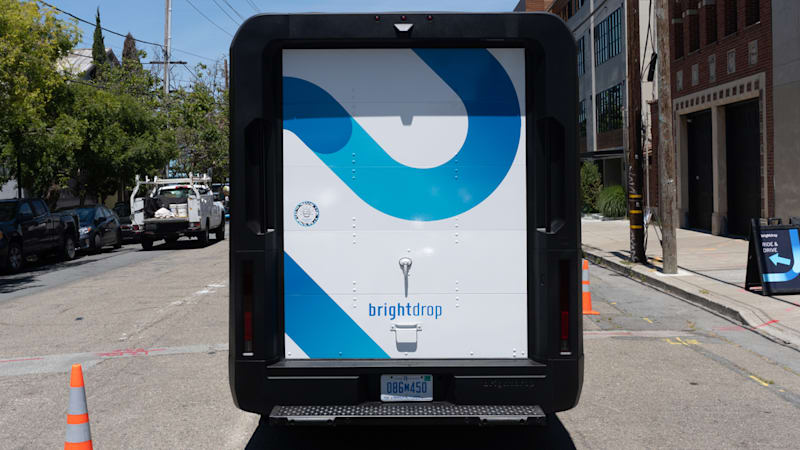
Some of these came into play as we drove the Zevo 600 through the narrow streets of San Francisco. Navigating the city’s hectic roadways is difficult in a passenger vehicle, and a large van requires, well, more everything. The Zevo 600 deftly handled the plethora of situations with ease.
The steering lacks any of the play found in older vans. It’s consistent and smooth. Acceleration is uniform and devoid of any weird torque surprises. Neck-snapping launches may be great in a passenger vehicle, but in a delivery van, they mean a landslide of boxes tumbling off shelves.
The van’s dual-motor all-wheel-drive system has 300 horsepower and 390 pound-feet of torque. The city is no place to drag race a delivery van, but in a short time behind the wheel, it sure seemed like the Zevo 600 would have any issue climbing San Francisco’s abundance of steep grades.
Most impressive, though, is the one-pedal driving. Within two blocks I could lift the accelerator pedal and accurately hit the mark at stop signs. At that point, the brake pedal was unused for the remaining 90% of the drive.
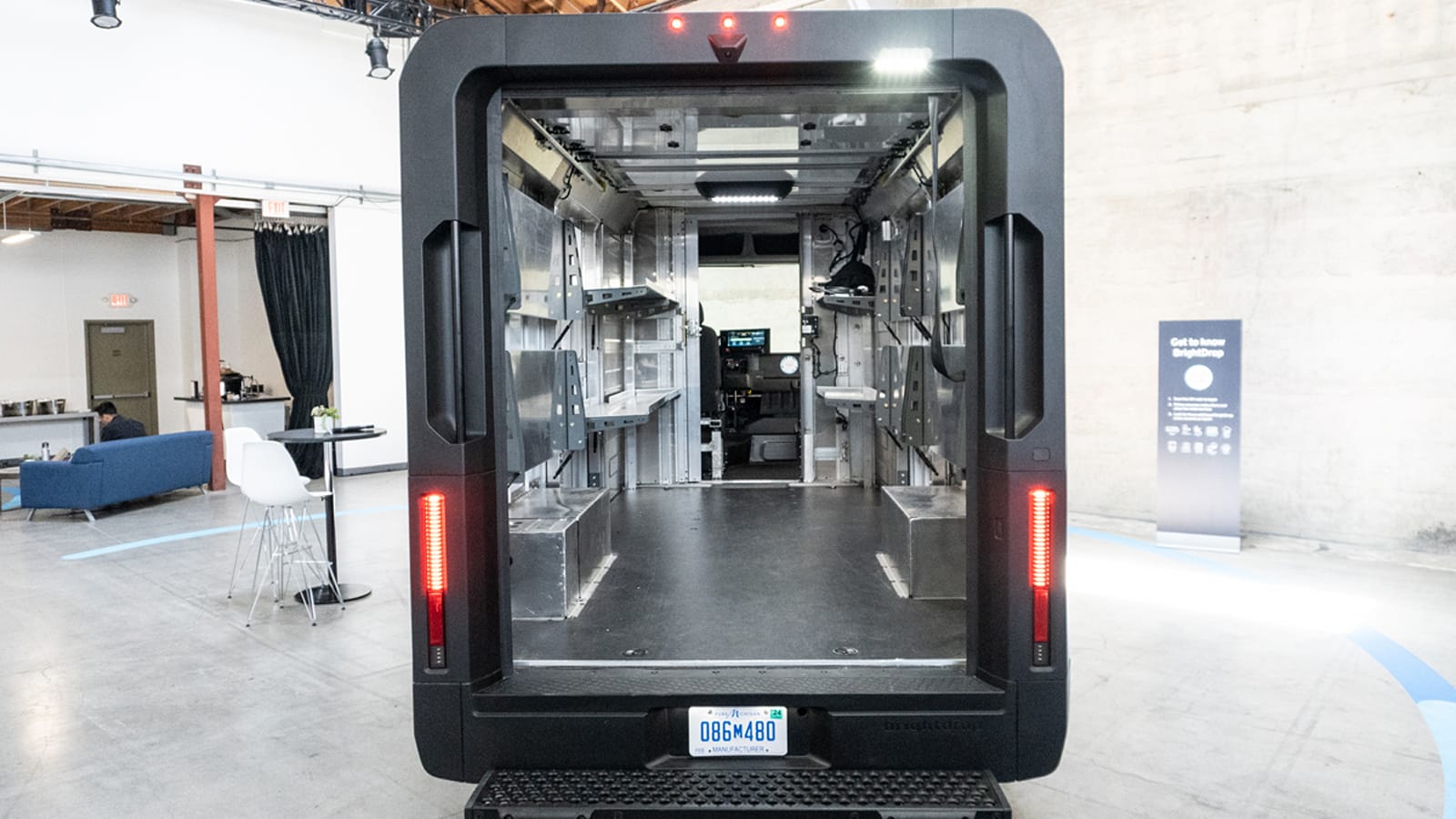
Yet it’s important to note our drive was in an empty van. The 600 cubic feet of cargo space was not filled with as much as 2,200 pounds of payload the Zevo 600 can handle. When it is filled, though, BrightDrop says its van can cover as many as 250 miles between charges based on a Society of Automotive Engineers’ (SAE) standard — there’s no EPA requirement for Class 2b and Class 3 vehicles.
That 250 miles of range is double the offering from Ford’s electric E-Transit van. BrightDrop says hitting that larger figure was important in keeping the van in service in varying types of terrain, weather and driving habits. The company also wants to get ahead of any potential battery degradation. Of course, it’s also a huge selling point for anxious companies.
“It is bigger than your average route by quite a bit. But certainly for an early adopter market, when you’re betting your entire infrastructure on the dependability of these vehicles, it is the right thing to do,” said Rachad Youseef, chief product officer of BrightDrop.
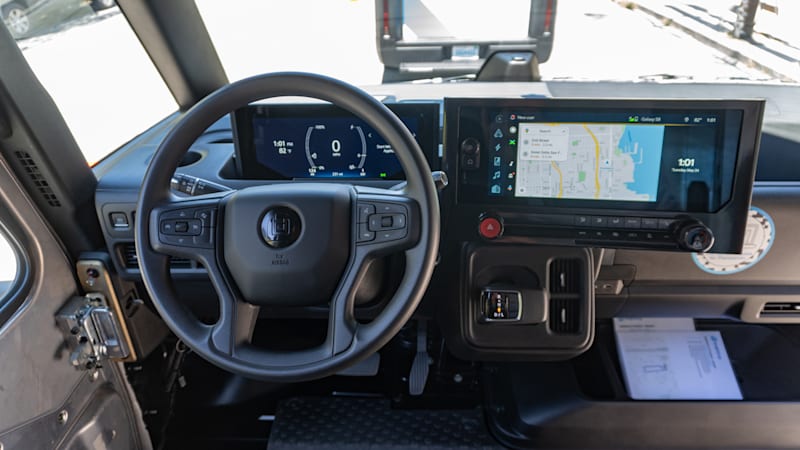
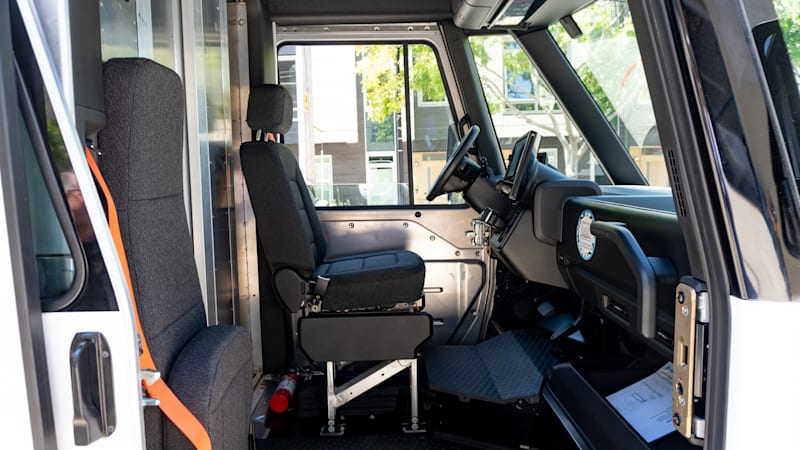
The range also allows for multiple delivery shifts. Instead of charging a vehicle after one shift, it could be redeployed after a driver change without needing to sit idle while charging. Time is money, after all. Youseef expects that, in the future, companies will order vehicles with lower range figures as they get up to speed on how these delivery vans will be used in their fleets. A smaller battery means less money and weight.
Estimating the efficiency, though, requires some work, as BrightDrop would not share battery capacity information. That’s not too surprising considering GM’s reticence to disclose the gross capacity of the Hummer EV. What we do know is that it uses 20 Ultium modules. Meanwhile, the Hummer EV uses 24 of those modules.
Some quick math based on EPA paperwork shows the usable capacity of the Hummer EV is 212.7 kilowatt-hours. Based on that figure, the usable capacity of each Ultium module is about 8.9 kWh. With 20 modules onboard, the Zevo 600 has an approximate usable capacity of 178 kWh, although it might be a little higher based on its charge rates. To keep it on the road, the van has onboard AC charging that supports 11.5 kW, and can support DC fast-charging up to 120 kW. In the best-case charging scenario, BrightDrop says the vehicle can charge from 0-100% in 1 hour, 40 minutes.
What is interesting is that the Zevo 600 was actually the first Ultium-based GM vehicle to hit public roads. While it uses the same electrical architecture as the Hummer, the Zevo 600 beat the gigantic electric truck to the streets.
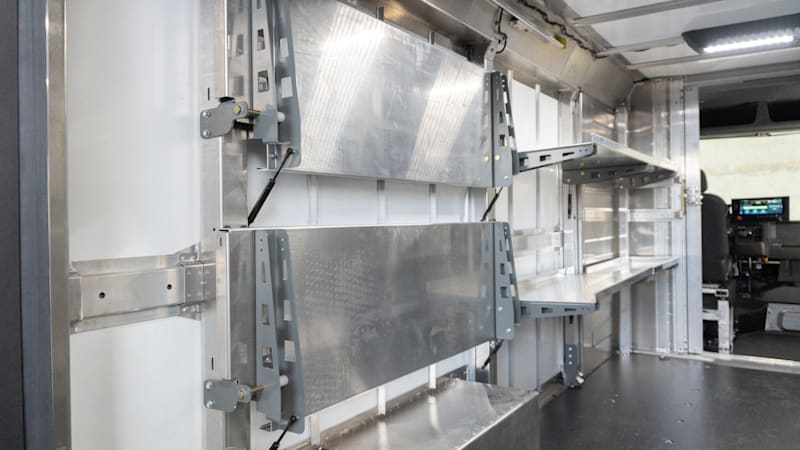
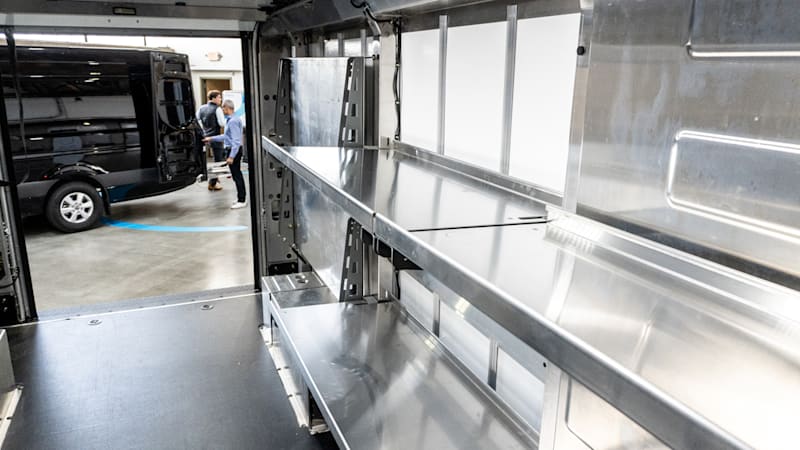
Of course, the Zevo 600 is plenty large in its own right. The cargo area and pass-through from the cab are tall enough to accommodate a 6-foot, 3-inch frame without issue or, more importantly, ducking at any point. This is consistent with modern, high-roof vans like the Ford Transit and Mercedes Sprinter. The steps to enter the vehicle are also deeper than usual and ready to accommodate a full boot.
As you enter the cargo area, motion-activated LEDs illuminate the space. Those sensors also play an important role in the security of cargo. They’re used in a locked vehicle to set off the van’s alarm and notify the driver via a companion app when tripped.
In-van tech also includes some familiar displays. The infotainment system and dash cluster displays have a layout in keeping with the Hummer EV since both run the Android Automotive OS. BrightDrop notes the current look will likely be replaced in the future with displays specific to the Zevo 600.
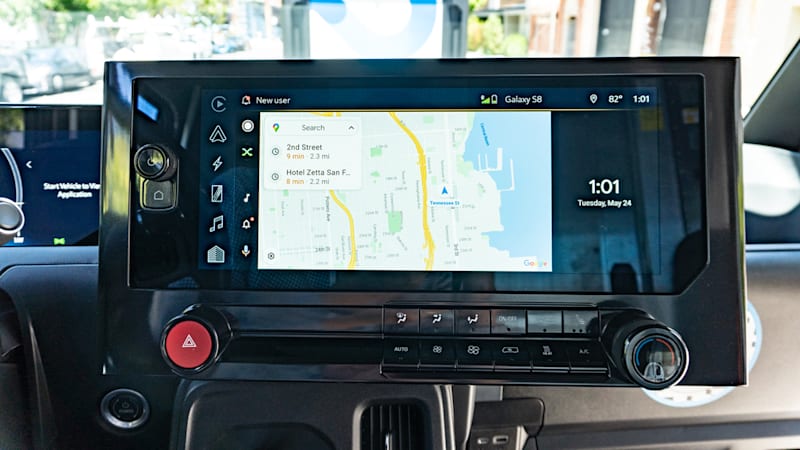
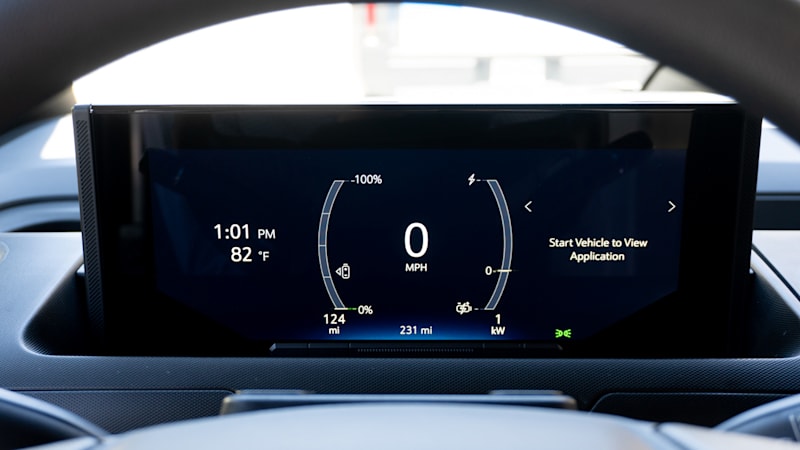
Overall, the Zevo 600 feels like an EV delivery van that should make both customer companies and their drivers happy to make the transition to electric vehicles. It’s impressive, considering that GM states that the Zevo 600 was developed in just 20 months. As such, it’s the quickest concept-to-commercialization vehicle in GM history. Yet it seems to be making an impression.
According to BrightDrop, 25,000 reservations have been made in the past year. Customers including FedEx, Walmart and Verizon are waiting for their vans, and the current low-volume production will be replaced with full production at GM’s CAMI Assembly plant in Ingersoll, Ontario, in the fourth quarter of this year.
This should be good news not just to those large corporations, but also to folks who are happy to wave down an electric van they’ve never seen before because it’s exactly what they need.




